TTNA Connects the Future for Technical Textiles
 May 20, 2016|
May 20, 2016| View:721
View:721Techtextil North America (TTNA) is a unique event, highlighting the higher end of technical textiles and its supply chain, an industry (many industries actually) with a true global presence. Along with their partners, Texprocess, and the composites group JEC Americas, they had a great success, in spite of the unfortunate conflict of another monster trade show, IDEA, INDA’s nonwovens showcase, being held the same time in Boston.
How was TTNA/Texprocess? In a nutshell, excellent. TTNA/Texprocess had over 7000 pre-registrations from 33 countries and 519 exhibitors (the final figures, including those of JEC were not available at time of writing). That’s about what IDEA had in Boston – so both had a great time.
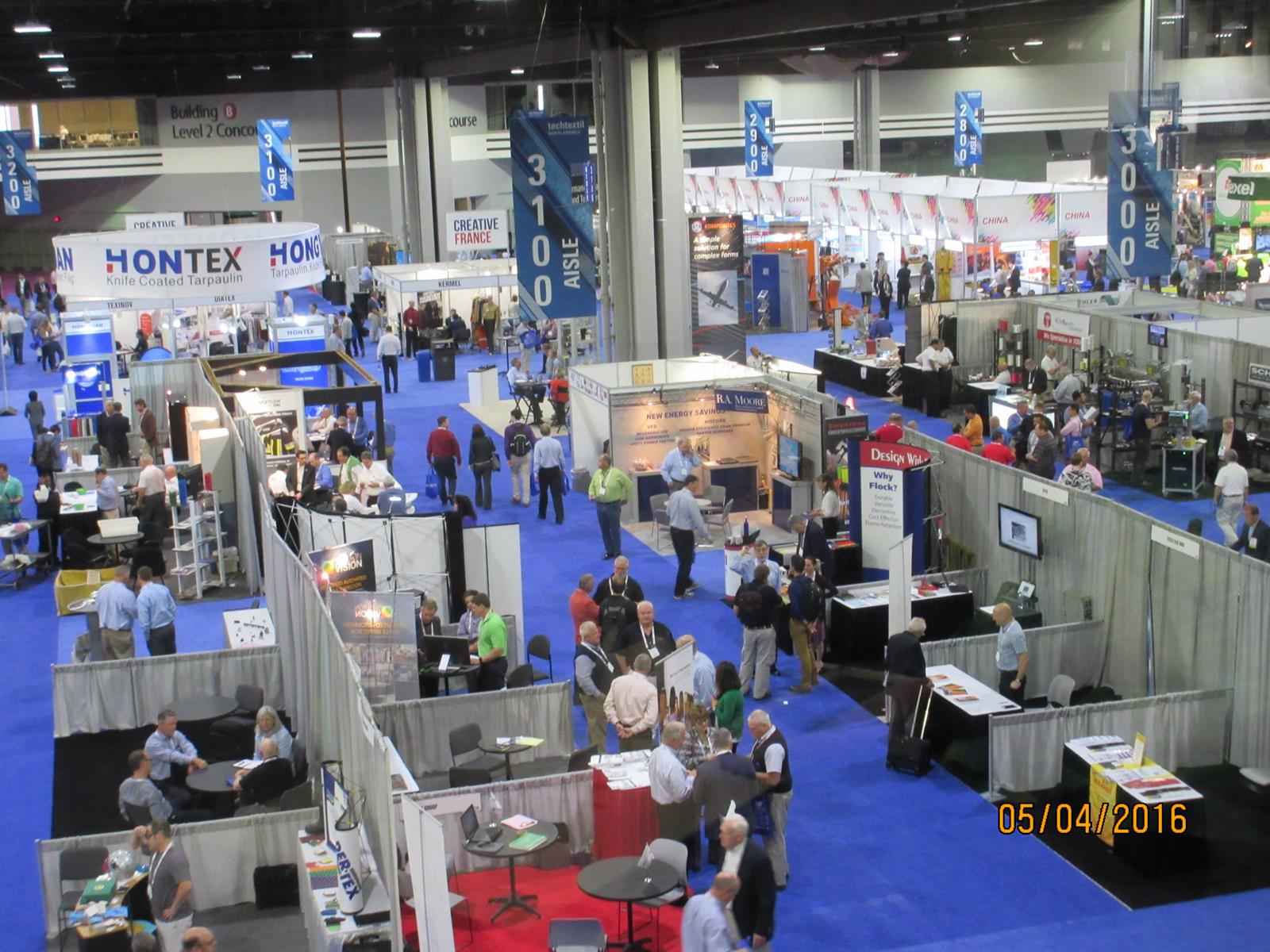
People go to trade shows for specific reasons, to see certain vendors, meet customers, to see new technology, get ideas for new products, and networking with industry colleagues are a few. The top companies use such events to get ideas using technology and concepts displayed and how they may be applied.
The fiber companies and some others with huge booths of former days were missing, but most top level companies were there, though with reduced size booths (some were exhibiting at both shows). Many smaller companies got a chance to shine, and start-ups trying to get some exposure were well represented.
Even a number of exhibitors were from countries not normally mentioned with technical textiles, such as Finland, Sri Lanka, Indonesia, and the like, along with a smattering from central and South America and even Canada. And, of course, the large country-specific pavilions China, Taiwan, Germany, France, Italy, with many small booths highlighting a wide variety of highly technical work being done in their countries.
Texprocess had quite a few extra-large machinery exhibits (sewing machines, robots [even for complicated tasks], fabric cutting and handling equipment and the like). Over 500 companies in all participated, illustrating the industry as truly global. A quick count showed just half of the exhibitors identified as USA companies while in Texprocess, almost 2/3 did. Yet it was obvious that many, if not most of the companies identified as such were American operations of foreign companies and/or selling products and machines made outside the USA.
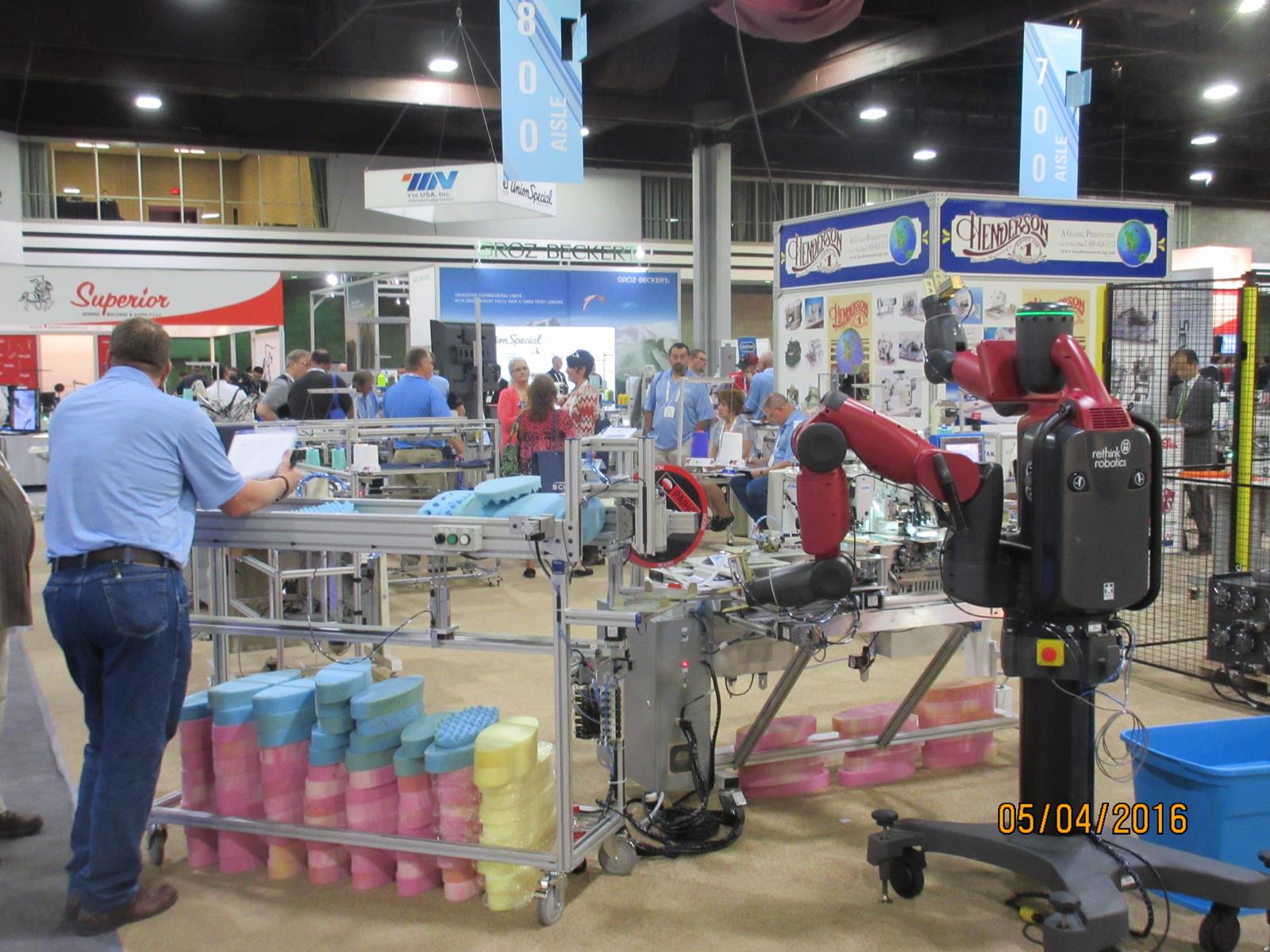
Techtextil had signs strategically reminding companies that much they would see was copyrighted or patented and should not be “appropriated” unlawfully. Such is always a concern, keeping many companies from showing their best and/or “keeping it under the table” at such events. Top companies visualize how new technology could work for them making new products possible or old ones better.
No “disruptive technology”, totally new technology and techniques that dramatically changes the way products are made, were observed at the show. To be sure, most is evolving technology, some new variations or or refinements, that will impact the industry and ways of doing things were in abundance. Someone said innovation, automation, and robotics were everywhere, as indeed it was, IF one bothers to look beyond the surface and seek the “under the table” information.
Symposium
TTNA has a reputation of high quality symposiums, and 2016 was no exception, with a full range of topics relating to technical textiles to help educate and to highlight new technology for the industry. Auxetic materials, those that quickly expand when hit and just as quickly return to original state, got a lot of attention with a full session on the topic, though the concept has been around a while. Sustainability was an important issue with talks on fluorine free/less treatments for water repellency. A new finishing procedure using less water got interest. Electrospun yarns have been a “holy grail” (seeking that one thing that will change things forever) with research going on for many years, yet cost remains high and much still needs to be done. Centrifugal spinning was presented as an alternative. Coats presented an interesting topic on new uses for “old” yarns/fibers, focusing high quality specialty threads used in automotive, and especially in safety applications such as air bags.
Texprocess
Dave Gardner of SPESA (Sewn Products Equipment Sales Association), partnering association for Texprocess, said the American market is strong and diverse, with exhibitors showing a wide range of fibers, fabrics, and machines for converting the fabrics to finished products. Growth has occurred among exhibitors the last three Texprocess events.
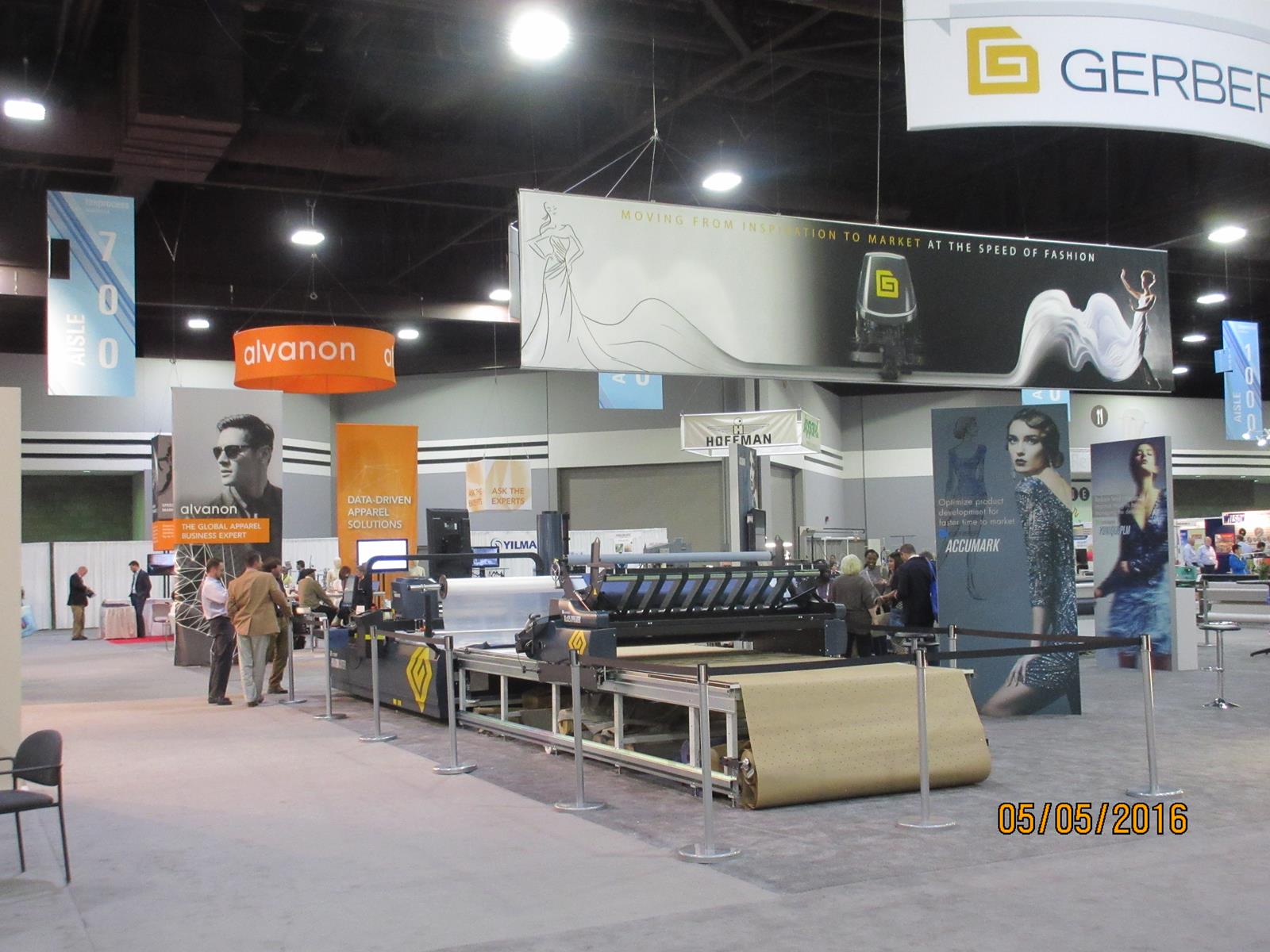
Gardner said about 80% of American produced yarns previously went off-shore. Now, it is about 50/50, indicative of a (limited) resurgence of apparel manufacturing in the US. He emphasized the “re-shoring” of many parts of the textile/apparel industry. Even Chinese are building a new spinning mill in South Carolina, finding that with trade agreements between the Caribbean/USA area, they could produce yarn cheaper in the USA, send it to Caribbean area countries for further processing, and then to bring back into the USA – all much cheaper than producing in China and shipping it to US.
Foreign companies are investing heavily in the USA for nonwovens and other widely used components. Being closer to the customer for quicker response is an advantage. Gardner sees digital printing and 3-D printing as examples of technology developments adding value. He emphasized though, with the increasing use of robotics and automation, apparel jobs may not see much US growth. Things will never get back to where they were, but end use production is growing. He was emphatic that “Texprocess is theright show, at the right place, at the right time”. “Many people,” he said, “cannot attend more than one major show – Texprocess is the one”.
JEC Americas
JEC Americas, the reinforced composites industry show, seemed to be a bit smaller than the others, but it was a busy spot, full of high technology, and “technology for the future” for new markets.
Two USA companies, McCoy Ellison, a producer of warping and creeling equipment, and Leesona, a maker of winding equipment, both decades old, still make their machinery in the USA. They were spotted on the JEC side, just over the curtain separating the TTNA and JEC. They claimed to be “the last man standing” (producing machinery in the US), and were there because they felt that is where the market is for them. The carbon fiber industry is growing rapidly, and still uses conventional warping and winding equipment. Having always been on the ‘textiles’ side before, they attended JEC in Paris recently and decided the carbon side was the place for them to be – there is much commonality.
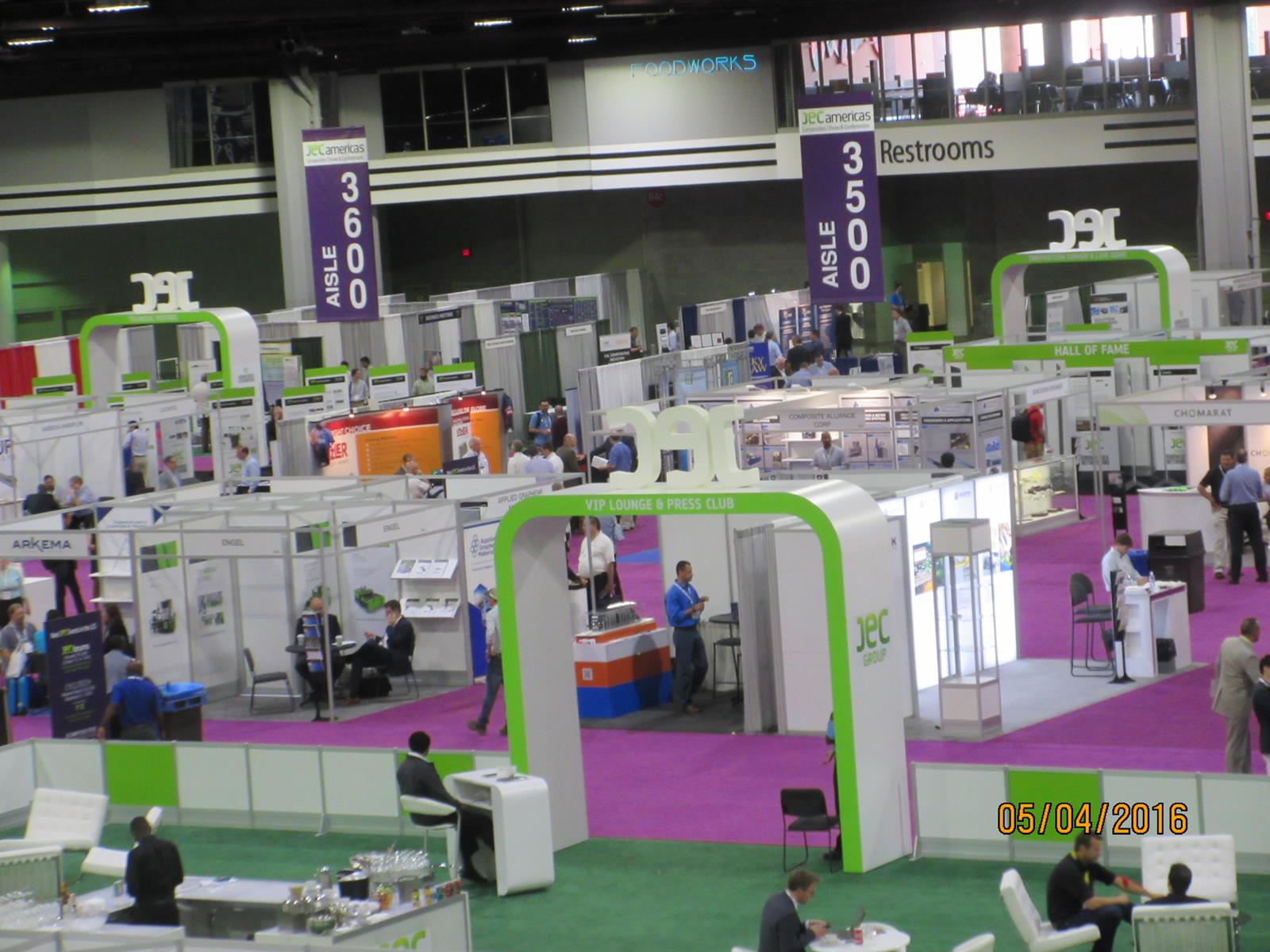
In fact, there was a lot of crossover – several of JEC exhibitors could easily have been in TTNA, likewise many former TTNA exhibitors were in Texprocess. It goes to show the range, breadth, and diversity of the technical textiles industry overall.
Spokesperson for JEC Americas said that the USA represented 32% of the composites by value (India, Asia, and Pacific area accounts for a total on 42%, with Europe at 20%. One saw a lot of IT being shown, in efforts to automate the process of producing materials with composites – much is now hand work. Rather than try to do everything with composites, it was said, a change of strategy allows using composites where they can most effectively applied, and to focus on specific major areas. Future JEC shows will reflect that with upcoming shows on automotives, another on sports, and a third on construction.
Cost has been major concerns in the composites, raw materials and production techniques. The IACMI Institute (the Institute for Advanced Composites Manufacturing Innovation), had Dr. Uday Vaidya, Chief Technology Officer, working with the Oak Ridge National Laboratory, a major USA think tank and developer of higher technology in a number of areas, discussed a new way of making carbon yarns suitable for applications not needing the high performance of aerospace. A lower grade raw material, he said, is used and making wider tows (bundles of fibers) hoping to get the cost from $20-40/pound to well under $10. Automotives he says, is such a target.
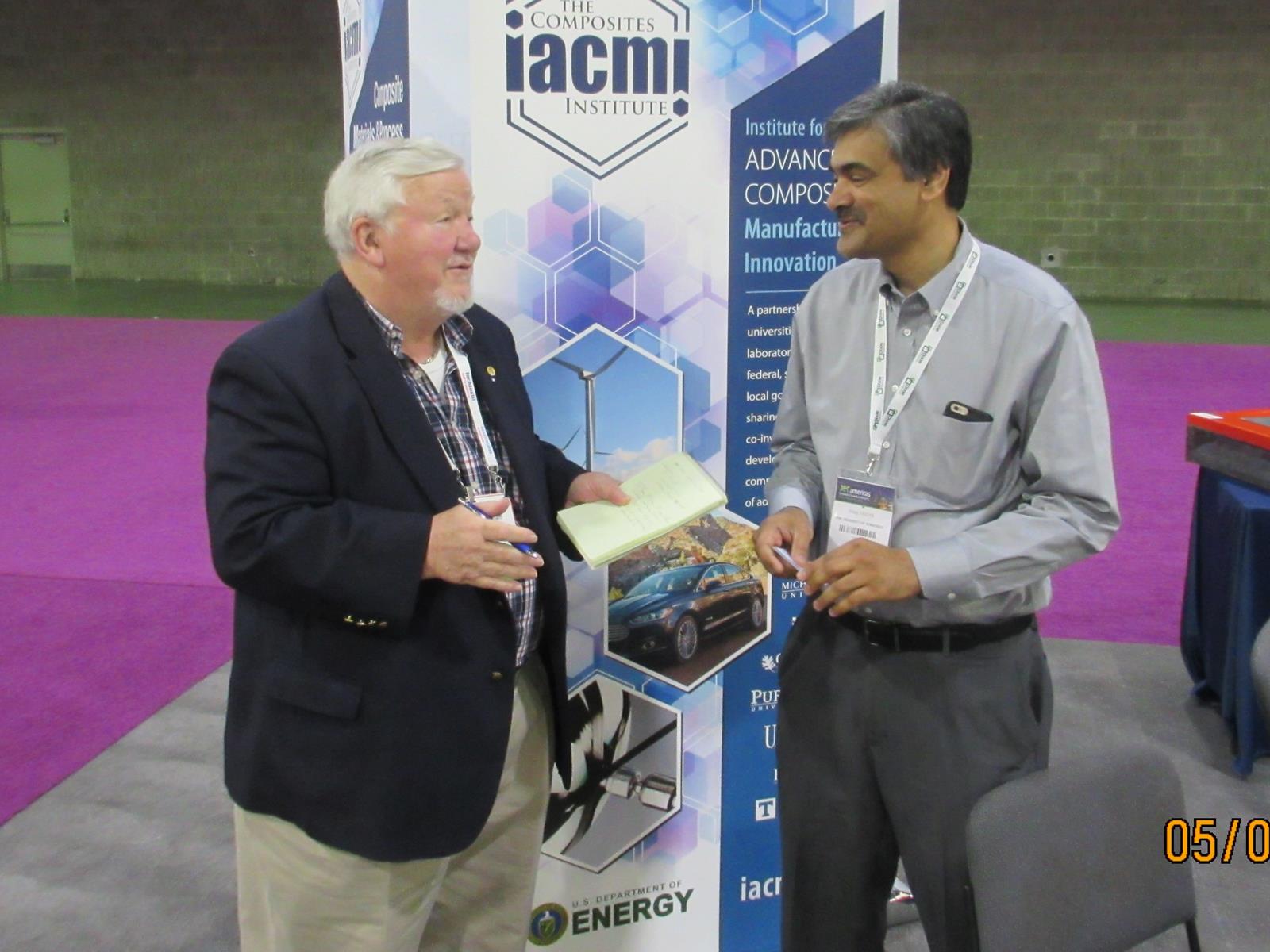
Graphene promises greatly improved properties in composites. Graphene is basically a layer one carbon atom thick and can be made and utilized by controlling layers and placement of the materials. Juergan K Glaser, Business Development Manager, Applied Graphene Materials, demonstrated several forms of graphene. Citing numerous studies with partners in graphene and applications development, including coatings, paint, and nanocomposites among others. Important new properties can be imparted, such as increased service temperature, fire resistance, barrier properties, friction and lubricity, and electrical conductivity. It may take some time to achieve scalable and high volume applications in some areas, but Glaser touted graphene as “Tomorrow’s Material Today”.
Directed Vapor Technologies, International (DVTI) claims to use an advanced version of physical vapor deposition, to create advanced products, depositing controlled thin and thick films/layers at a high rate onto complex components. Said to be a lower cost process to create engineered surface coatings, for conductivity, energy storage (batteries), e-textiles/smart fabrics, electromagnetic shielding, etc., on materials such as copper, nickel, silver, gold, among others, onto polymers, carbon, aramids, glass, and even carbon nanotubes. The vacuum process is expensive so the goal is to create a much lower cost system (see APJet below).
JEC, and the technology and markets they represent, is a welcome addition to the technical textiles family. Though products may bring higher-end technology, the fibers and yarns still utilize textile processes.
TechtextilNA
In our era of mergers, acquisitions, spin-offs, some companies need “reintroduction”. Covestro, a spinoff of Bayer’s business in polyurethanes, is such a company. They had a large booth designed to draw attention to the “new” company. Such exposure is critical, said Robert Saunders, head of textile coatings NAFTA. “We are not a new company, but people are not familiar with the Covestro name”.
Alexium, a small startup, of several years now, focused on their efforts in FR, removing problematical components to be effective and sustainable. Alexium is a good example of starting with a highly effective new process, and it worked well (they had a government contract for millions of dollars), yet working with the marketplace, they had to admit “cost too much for companies to gear up”. They “put that product on the back burner”, for now, and focused on new areas, FR being one of them. Apparently it is working as expansion is currently underway, so expect to hear more from this technologically oriented company.
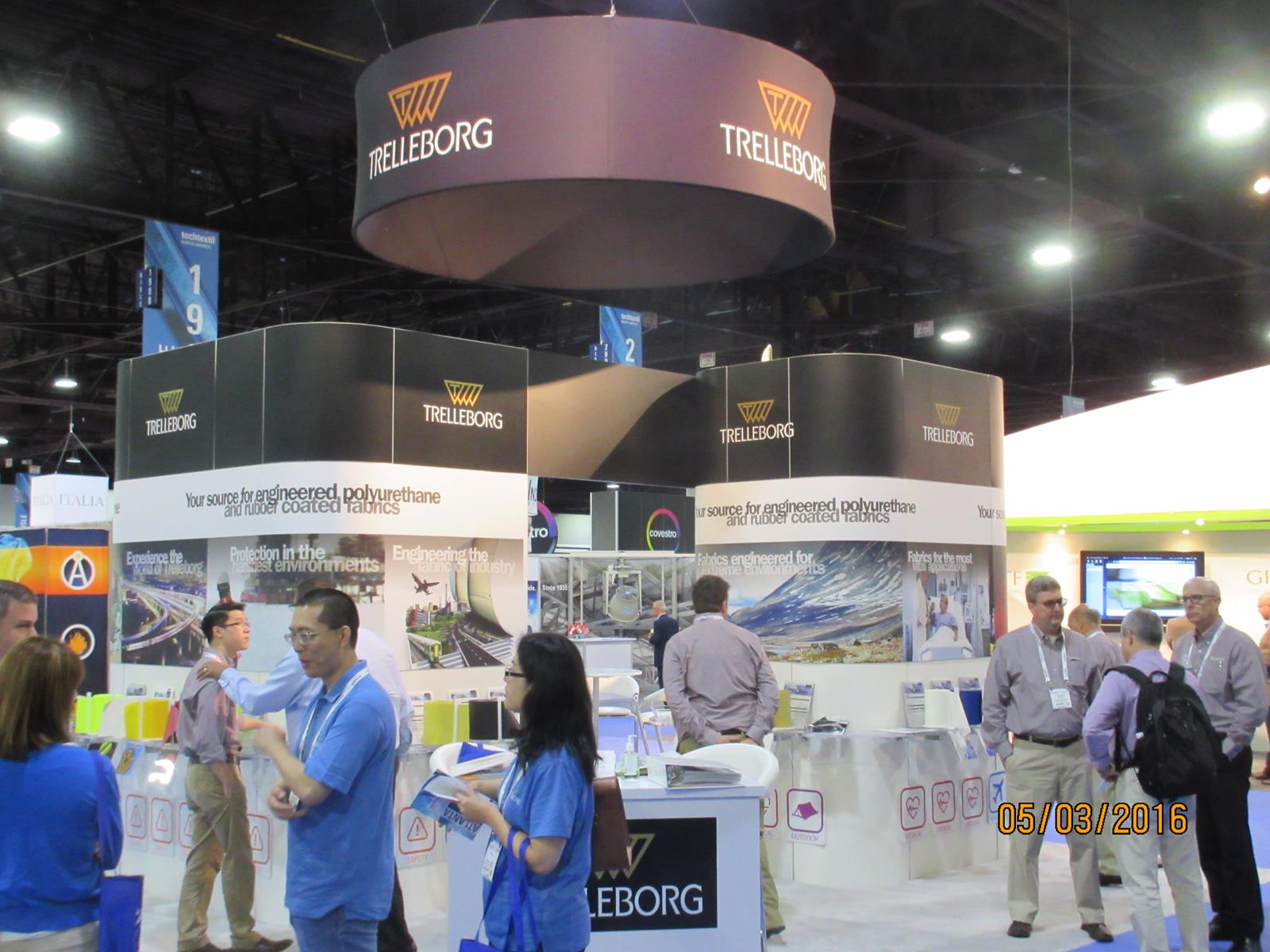
APJet showcased their atmospheric dry plasma process. The goal of atmospheric plasma treatment is to effectively plasma treat fabrics, at lower temperature and without costly conventional vacuum processes (see DVTI above), in order to impart a range of specific properties to fabrics. It is a dry finishing process. While this technology has seen efforts by many companies to commercialize for several years, APJet has made great progress, and currently has demo and short range production facilities in their new Research Triangle Park facility, near a development partner North Carolina State University. The problem has been the laboratory efforts have succeeded but to scale that up to full production has been difficult. APJet thinks they have the solution.
Just about every facet the technical textiles supply chain was represented at TTNA, large companies, small companies, startups. Yarn people were there, fabric producers (woven, knit, and nonwoven) were scattered out among the extensive company specific pavilions. Many major companies not exhibiting, had personnel walking the floor, feeling it was the major industry show, not to be missed.
What’s Next?
First produced in the USA in 2000, and running on two year cycles, TTNA has grown in stature and importance to the industry. Like its parent show, Techtextil in Frankfurt, started in 1986 and run on 2 year cycles in odd-numbered years since, and now, with Texprocess, has near 1000 exhibitors attracting global audiences in the 25,000 range. Growth has come by having partners and co-locating with such as Texprocess and JEC. With TTNA as the “jewel” in the center and JEC as bookends on either sides, those attending had a wide range of interests and opportunities available from many facets of the overall technical textiles industry.
Many were surprised to learn TTNA would be in Chicago in 2018. TTNA started a “west coast” edition in 2009 in Las Vegas, to give the west coast “an alternative” and highlight technical textiles for those areas. After another year in LV, they went to California, and in 2015 went to Houston with JEC to exploit the aerospace industry.
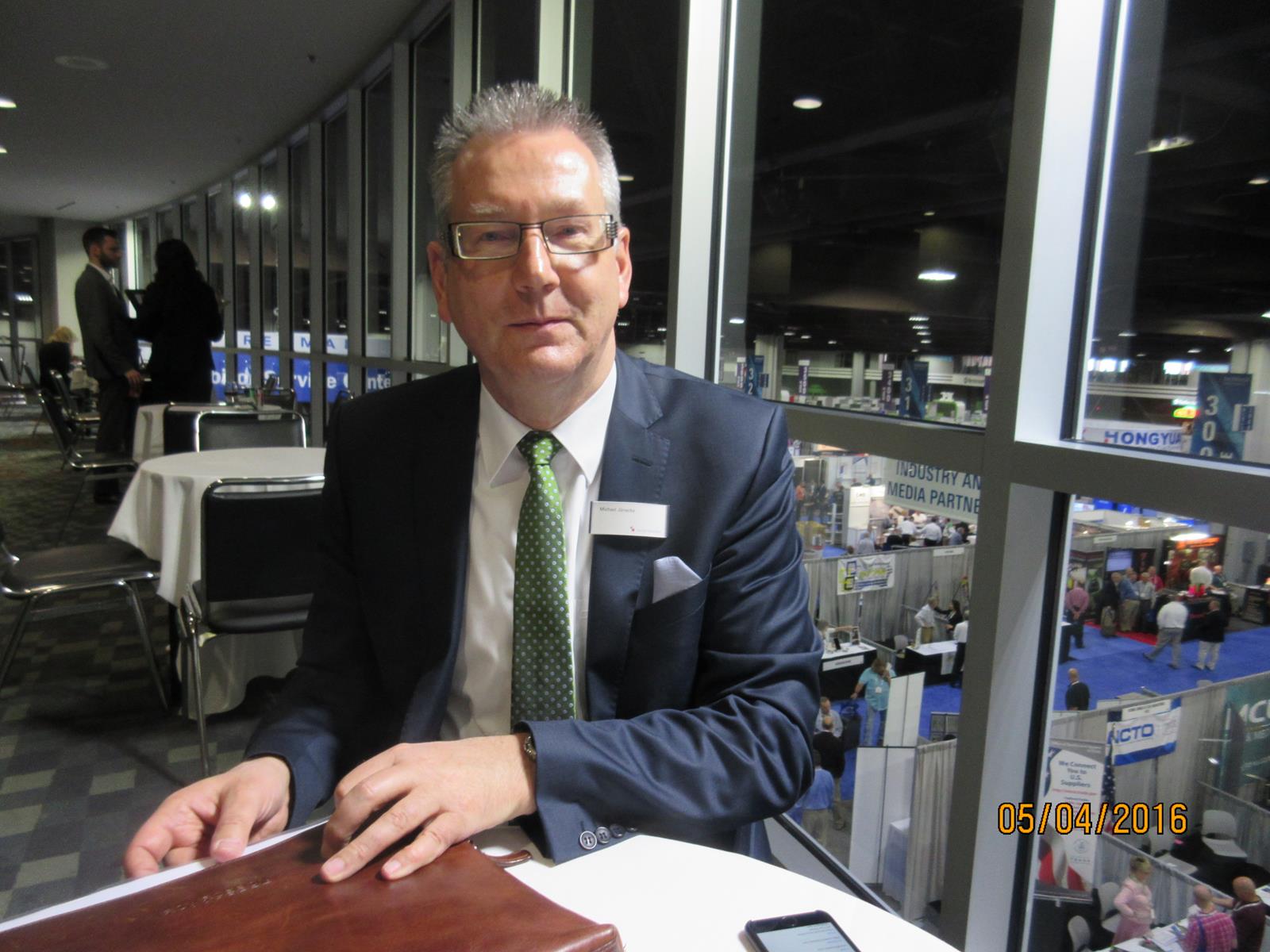
Going to Chicago, moving to America’s Midwest, changes the “west coast” paradigm. Michael Jaenecke, world-wide brand manager for Techtextil, says TT has expanded to many countries world-wide, such as Russia and India, where there is a growing need in technical textiles. Using a local partner is crucial to success. The shows on the even numbered years in America were intended to offer an alternative to those unable to “go South”.
Chicago is said to highlight technical textiles to industries heavily represented in the Midwest, such as automotive, metals, and the many light and heavy manufacturing, and to the many producers still in the areas, as well drawing from Canada as well. JEC will again, co-locate with TTNA. “Atlanta is and will always will be the home to TTNA”, said Janecke, though other areas will benefit from such exposure the alternative shows. TTNA will, of course, be in Atlanta in 2018, and co-located with Texprocess.
It was obvious the TTNA/IDEA conflict had an impact. Many companies were at both places, with usually smaller booths at each, splitting efforts and personnel. The organizer Messe-Frankfurt did an admirable job of coping with the problems and put on a great show. It is a “must see”.
www.techtextilna.com
www.texprocessamericas.com
www.jeccomposites.com

 info@topweaving.com
info@topweaving.com



View More(Total0)Comment lists